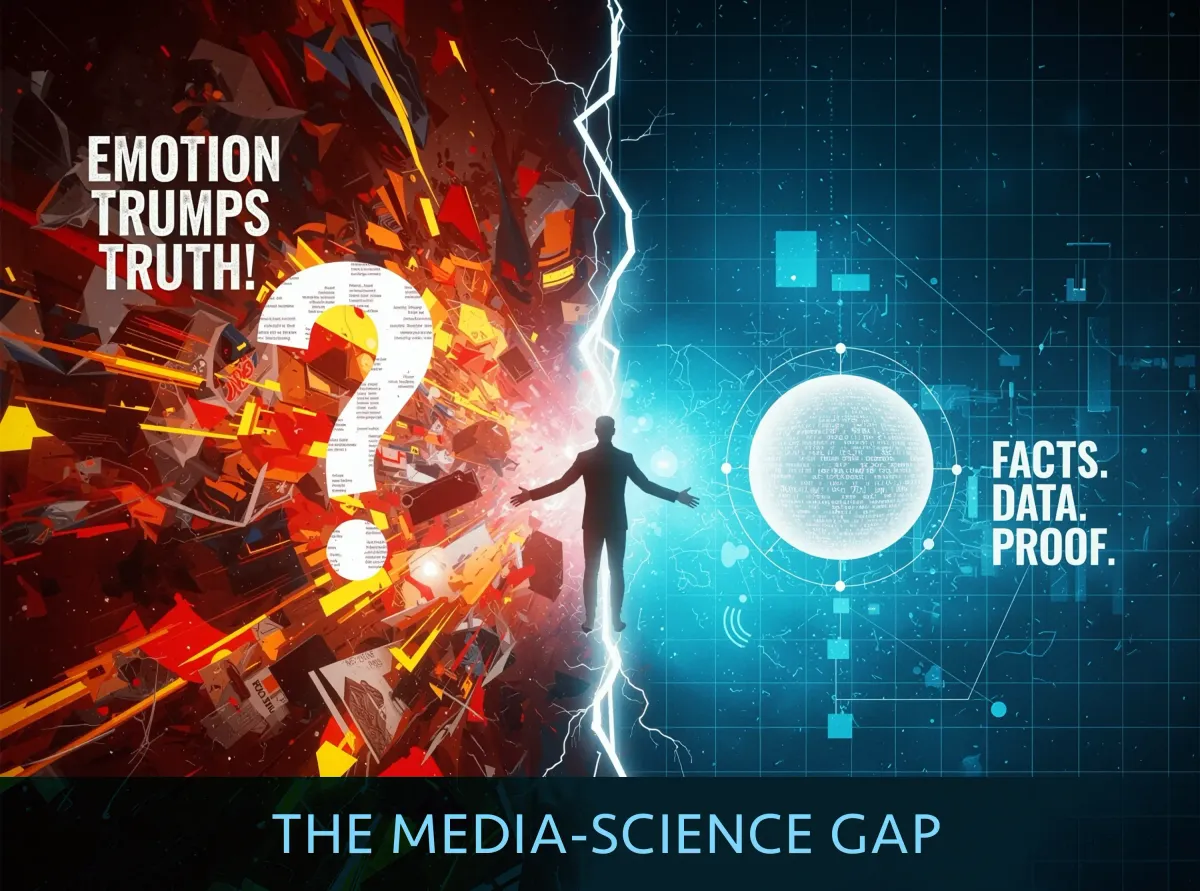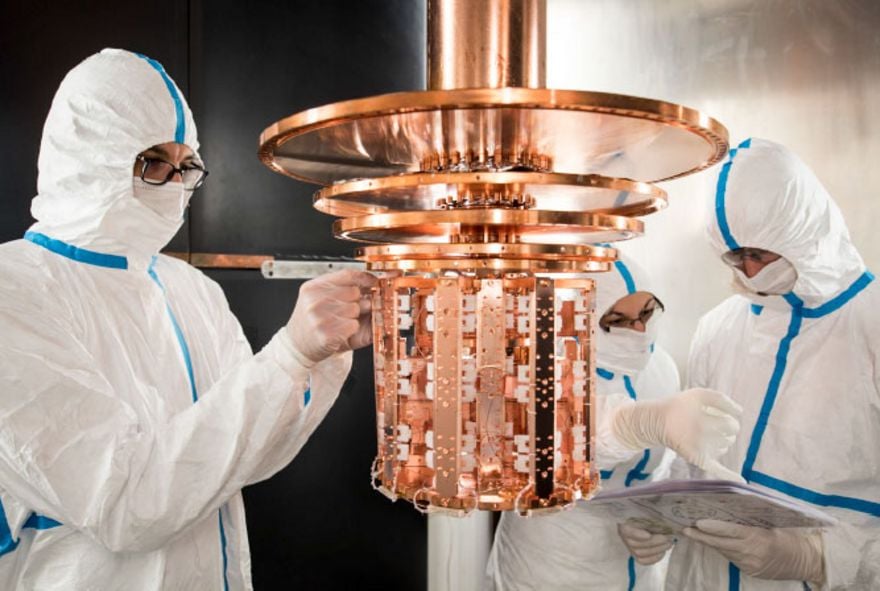What if I told you that while you can’t see dark matter, maybe you can hear it? I know, I know, it sounds crazy…and it is crazy. But it’s crazy enough that it just might work. It’s a real life experiment, called the…let me see here…the Cryogenic Rare Event Search with Superconducting Thermometers, or CRESST – that’s a double s in case you didn’t catch that. Look it’s not the greatest of acronyms but we’re going to just go with it.
The experiment is buried deep under the Gran Sasso Mountain in central Italy (which, by the way, gran sasso is Italian for “great rock” in case you need some bonus trivia on your next date night), and it consists of a giant crystal of calcium tungstate, also known as Scheelite. The crystal is cooled all the way down to just a few millikelvin, right on the edge of its superconducting state. The idea is that if a dark matter particle happens to intersect with the detector, it will cause the crystal to vibrate (the energy has to go somewhere, after all), which will mess up the superconducting state and produce a detection.
CRESST has been operating for years and has yet to make a confirmed detection of a dark matter particle. But in science, an experiment is only a failure if you don’t learn something, and we’ve definitely learned about dark matter with the CRESST experiment. Specifically, we’ve learned what dark matter isn’t.
In published papers about dark matter detection experiments you’ll often find charts and graphs that look like this. Remember that we don’t know the identity of the dark matter particle. We have some guesses based on various theories and concepts, but at the end of the day we don’t know the precise properties of that particle. Specifically, we don’t know its mass or how easily/rarely it interacts with normal matter.
We have some limits from our observations of the wider universe, and we’ve been able to eliminate a lot of possibilities, like neutrinos. But after that it’s fair game. That means we have two jobs. On one hand we need to come up with reasonable and well-motivated candidates, which involves a lot of creative brainstorming, theorizing, and guesswork. And on the other hand we need to come up with experiments that can rule out specific candidates, or failing that put some more precise limits down on what kinds of properties the dark matter can have.
That’s how we end up with graphs like that, which are showing how that particular experiment ruled out certain mass ranges and interaction strengths of the dark matter. By simply running the experiment and not seeing anything after a while, you can confidently say which properties of dark matter are excluded: you can say that the dark matter CANNOT be this particular mass with this particular interaction strength. And then you do it again, and again, and again.
And of course you don’t run just one experiment. Remember, the dark matter could have a wide variety of masses and interaction strengths, and no single experiment is able to cover the entire range.
The possible mass of the dark matter particle can span a range over 50 orders of magnitude. Because this is a particle, we need to use the language of particle physics, which means we express mass in terms of electron-volts, or eV. On the large end, an individual dark matter particle might weigh 10^24 – 10^30 eV, which is somewhere between the mass of a bacterium and a small insect. We generally don’t think dark matter particles can get much bigger than that, because anything with the mass of, say, a planet or a star would have shown up in gravitational lensing observations by now.
On the other end of the spectrum we can have ultra-light dark matter particles going all the way down to 10^-21 electron-volts, which opens up some really fun opportunities that I’ll talk about in a little bit.
But for decades our prime dark matter candidate was the WIMP, that weakly-interacting massive particle, which we thought had a mass range of a few billion or trillion electron-volts, which is in the similar mass range of known heavy particles like the W and Z bosons and the top quark. So big, but not too big. We liked the WIMP because various theoretical extensions to the standard model predicted the existence of a particle in that mass range and with the right properties (that is, mostly invisible).
I will never stop saying this: WIMPs aren’t the greatest idea in all of physics, and the whole dark matter hypothesis is all built on circumstantial evidence. But of all the options we’ve got, it’s the least bad one we have. It’s the SIMPLEST explanation for the greatest amount of observations. It’s the expression of this concept we use a lot in physics, which is parsimony. We treat theoretical ideas like graduate students: how do we get the most work for the least effort, or how do we get the most amount of explanatory power out of the fewest possible assumptions. The dark matter hypothesis has its shortcomings and certainly isn’t able to explain every observation, and WIMPs are just a hair above just straight-up make-believe fairytale particles. But any other hypothesis both has more assumptions (more moving parts) AND less explanatory power (matches fewer observations).
So…shrug…WIMPs it is.
Until it isn’t. That’s because we can make all the arguments we want, all day long, about parsimony and observations and alternatives, but in science nature is the ultimate arbiter of which ideas stay and which ideas go. We need direct, hard, experimental verification if we want to go along with the dark matter story, which is exactly why we built experiments like CRESST – to go hunting for WIMPs, collect a few Nobel prizes, and move on to other exciting unsolved cosmological puzzles.
We have run dozens of direct detection experiments around the globe hunting for WIMPS – dark matter particles in this particular mass range. And they’re not all the same kind of experiments. There are also the scintillators, which use a giant vat of liquified noble gas, like several tons of xenon. They wait for a dark matter particle to strike the xenon and cause it to scintillate, which is a fancy science word for “sparkle”. We see the sparkle; we detect dark matter.
WIMPs aren’t alone. They’re just one example of a broader class of dark matter candidates, with delightful names like Q-balls, WIMPzillas, and sterile neutrinos. We’ve tuned our different experiments to capture different mass ranges or interaction strengths to cover as much of that wide dark matter spectrum as possible. We’ve even tried to manufacture various kinds of dark matter in our particle collider experiments.
And we’ve found nothing.
First Appeared on
Source link













